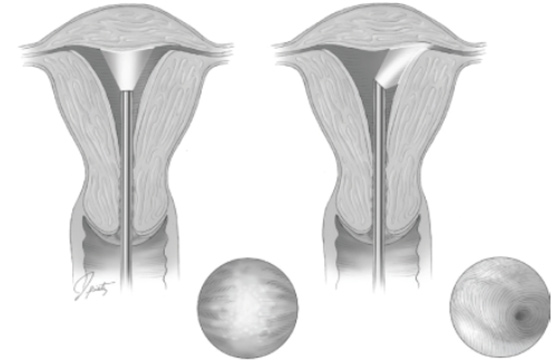This website uses cookies so that we can provide you with the best user experience possible. Cookie information is stored in your browser and performs functions such as recognising you when you return to our website and helping our team to understand which sections of the website you find most interesting and useful.
Surgery
Surgery
Hysteroscopy
Hysteroscopy is a minimally invasive endoscopic method with which we can examine the inside of the uterus.
It is a specially designed camera, about the size of a pencil, that is inserted intravaginally through the cervix.
It is done under general anesthesia, although in some cases it can be done without.
With this method, we can literally see the entire endometrial cavity and intervene selectively if necessary, which is why it has an advantage over the classic scraping of the uterus, which is a “blind” technique.
Hysteroscopy can simply be diagnostic, thus ruling out a suspected pathology, or invasive, that is, treating a lesion.
The operations that can be done in this way are the removal of polyps, fibroids, the solution of adhesions and uterine septum, the removal of trophoblast remnants.
As we mentioned above, with the hysteroscopy we can intervene selectively on the pathological points of the uterus, always having visual contact, reducing the damage to the adjacent healthy tissues to a minimum.
Uterine polyps
Uterine polyps are among the most common benign uterine diseases.
It is a type of local hypertrophy of the inner layer of the uterus, called the endometrium.
They can appear at any age either with the main symptom being painless vaginal bleeding, or they are completely asymptomatic. Their frequency in the female population ranges from 6 to 12%
Factors that predispose to their appearance are
- increased levels of estrogen in the blood (endogenous or exogenous)
- treatment with tamoxifen
- obesity
The diagnosis with the transvaginal ultrasound has now been simplified, since it is a common and painless examination that is systematically carried out in the doctor’s office.
In case of suspicion in the ultrasound examination, the next stage is the hysteroscopy, which will resolve any doubts and at the same time the polyp will be removed.
In general, it is recommended by the gynecologist to remove them by the hysteroscopic method, since polyps are one of the causes of infertility, while also a small percentage of them can develop into malignancy (around 95% of endometrial polyps are benign).










